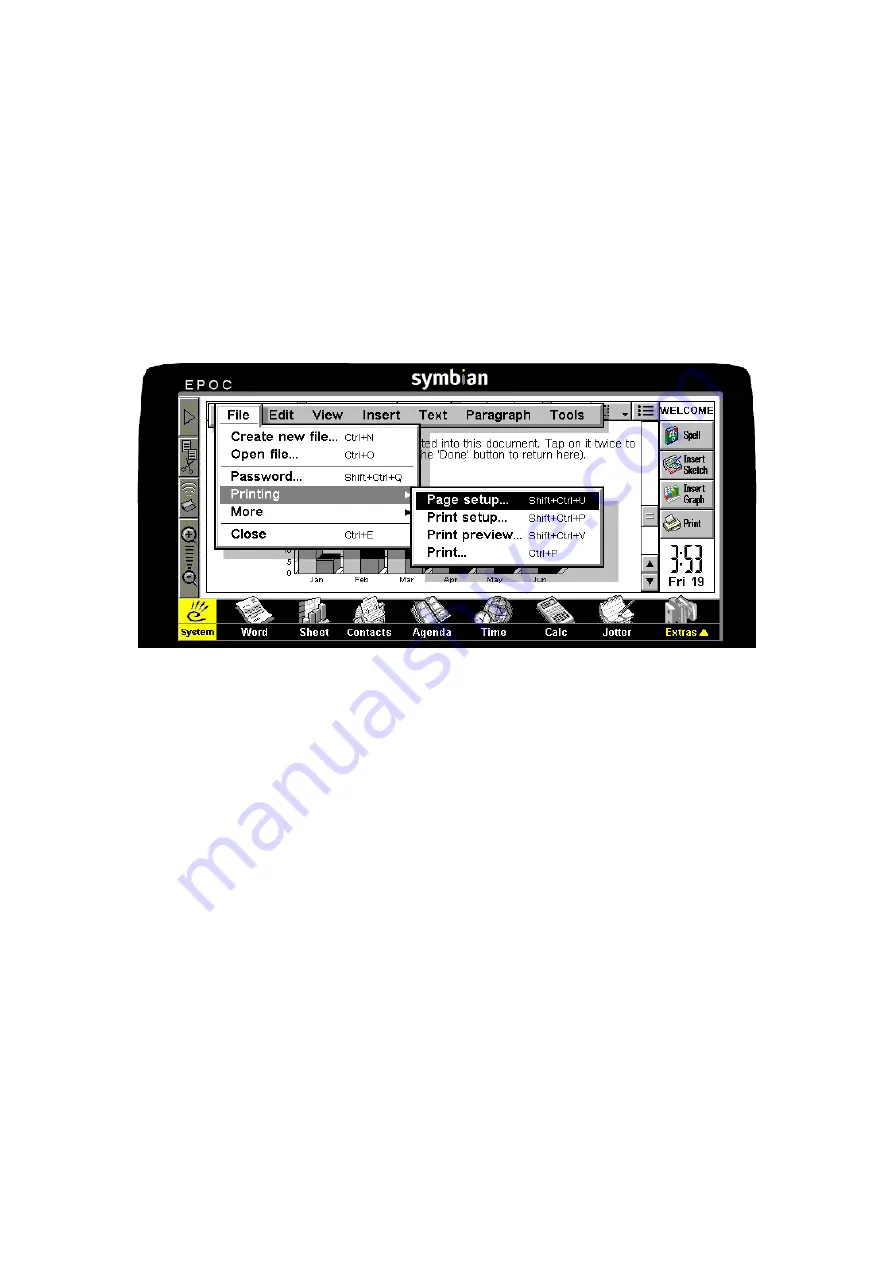
31
The pen is different from a mouse: it can draw very easily, it can select and point just as easily as a
mouse, but it cannot hover or right-click, and double-click and dragging are error-prone. This led
to EIKON’s select-and-open paradigm, whereby a pen tap on an unselected item selects it, while a
tap on a selected item opens it — regardless of when the item was selected or even whether it was
selected by pen.
EIKON supports extensions of the touch-sensitive screen area to the left, and below, the LCD
display. Icons printed on the display surround, in the touch-sensitive area, then serve as buttons.
The left-hand sidebar is used to select menu, clipboard, infrared beaming and zooming functions.
The bottom taskbar is used to select applications.
The figure,
EIKON
shows an EIKON screenshot. The look-and-feel is rich with pleasant features.
Menus, scrollbars, buttons and other elements are drawn neatly and look good on all types of
screen. Shadows are used to highlight menus, dialog boxes, calendar potentially pop-ups etc.
Operation of all applications is convenient with either the keyboard or the pen.
EIKON
Users can send commands to applications using menus, shortcut keys, or toolbar buttons. Menus
support cascades and pop-ups. Dialog support includes single and multi-page dialogs and even
scrolling dialogs for special applications.
Many standard controls are available, including number and text editors, list boxes and combo
boxes, font and sound selectors, colour or greyscale selectors, and controls optimized for personal
information management, such as convenient time/date navigation, and latitude and longitude
editors.
Standard higher-level components include file browsers, Open and Save As dialogs, print settings
and print preview. Scroll bars have dynamically-sized grab handles, and scroll application data
while being dragged. A console is available for displaying comms terminals and text-based shells.
Many types of list are supported, including hierarchical lists, multi-column lists in which each
entry has several aligned fields, and snaking lists, which wrap vertically into a container. A variety
of standard lists are provided, and owner-draw lists may be written.
All these features are made conveniently accessible through APIs and resource files. The
EIKON
Style Guide
in the SDK describes usage guidelines for producing EIKON applications, which
conform with Symbian’s look-and-feel standards for EIKON.
Each EIKON application runs in its own process, whose main thread has an instance of the
EIKON environment, which controls all interaction on the screen and sidebar, and all keyboard
interaction except a small number of hotkeys. Due to the effectiveness of the active object
paradigm, secondary threads are rarely if ever used by native EPOC applications






































